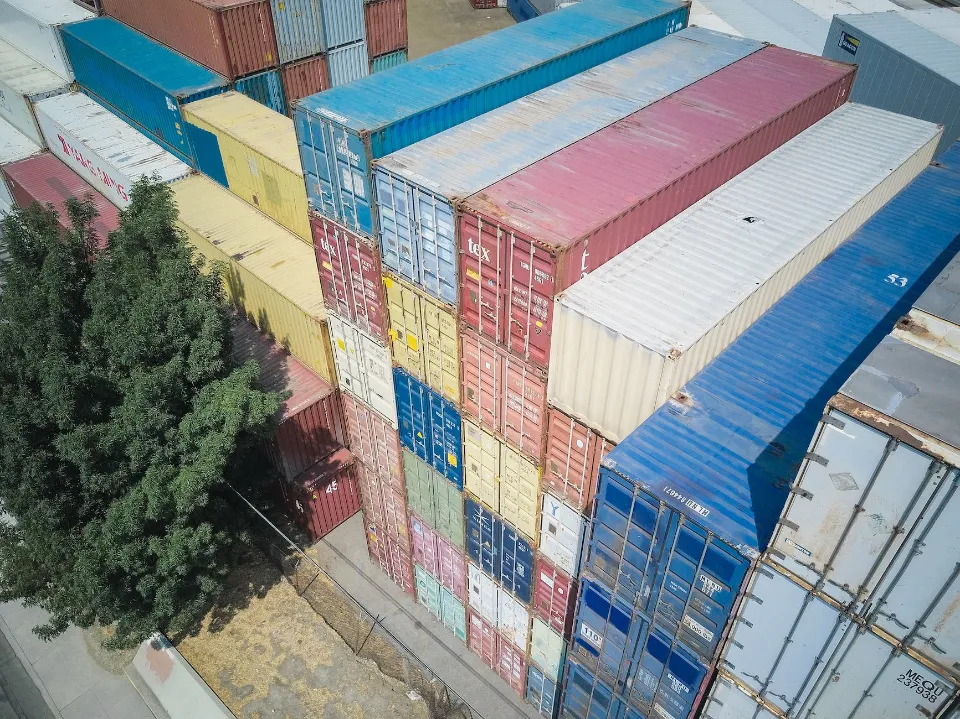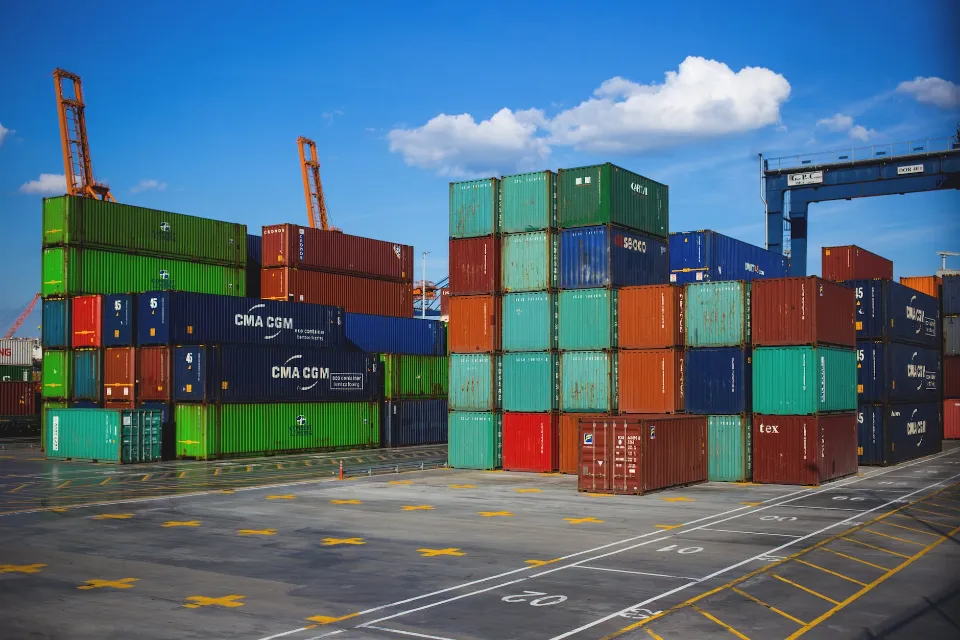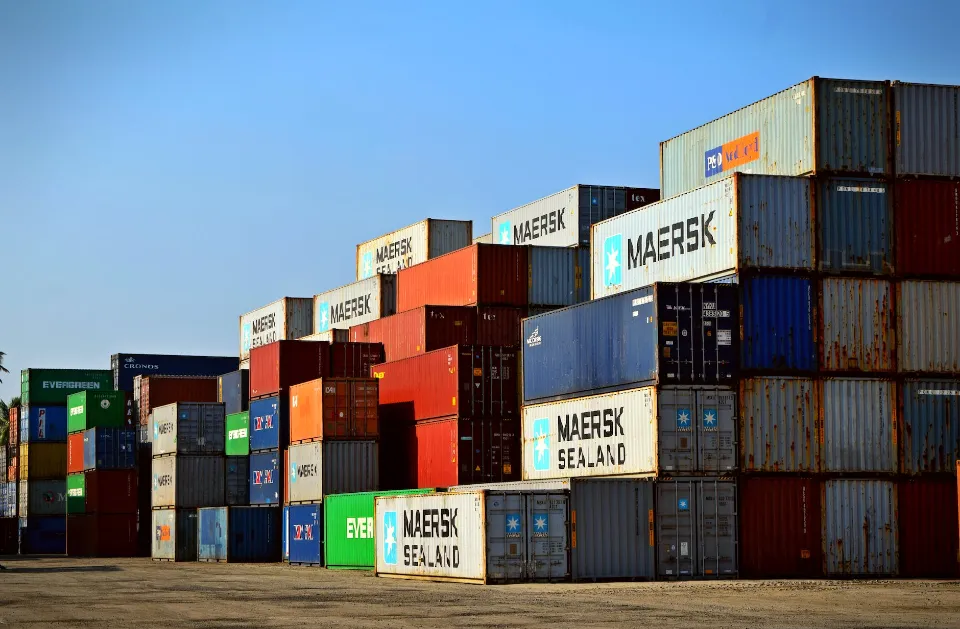A basic shipping container typically costs between $1,800 and $8,300, not including shipping.
Even for homeowners, shipping containers are in high demand, as evidenced by the growth of the shipping container home movement and projects like erecting a new storage building in the backyard. A shipping container can cost anywhere between $2,300 and $8,300, depending on its size, age, and state.
Particularly if you’re converting it into a fully functional home, a heavily modified shipping container can cost up to $50,000. Remember that you’ll need to account for expenses like shipping, leasing, and permit costs. Let’s examine the breakdown of the price for a shipping container.

Storage Container Cost by Size
The two common sizes of storage containers are 20-foot and 40-foot models. You may also be able to choose a 10-foot storage unit in some circumstances. Because all containers are the same height and width, the price changes significantly for lengths between 10 and 40 feet. You should choose the strategy that is most affordable keeping this in mind.
Prices for used shipping containers typically range from $1600 to $1800. Reselling shipping containers is simple because they are frequently too expensive to ship back.
10 Foot
10-foot containers make up for their lack of storage space with a low price tag that can drop below $1,000 on used models. This choice is ideal for many young customers who have fewer materials to store. These units can fit the furnishings of a tiny one-bedroom apartment in their 80 square feet of space. A 10-foot container, however, is insufficient for many businesses and multi-family residences.
20 Foot
The average-sized model, 20-foot containers range in price from $2,500 to $6,000, depending on their state and extras. The size of this unit will be advantageous to small-to-medium-sized businesses and families with more possessions. This container, which measures 146 square feet, can accommodate a two- to three-bedroom house’s worth of belongings. These containers frequently contain materials for the agriculture and construction industries.
40 Foot
40-foot containers cost between $4,000 and $7000 due to their generous storage space. However, they compensate for their high price with unmatched storage space — 300 square feet. Due to their size, cargo ships use cranes to mount as many 40-foot containers as they can. These units are used by shipping companies when they want to move as much volume as they can.
Price by Storage Unit Condition
Depending on the size of the container, buying used will result in savings of $1,000 to $2,000. Although renting and buying used vehicles can result in significant savings, this isn’t the only thing to take into account. Lenders and sellers categorize used containers into different groups in the storage industry. Price reductions might turn out to be less than anticipated depending on the specific condition of a unit.
The factors that affect a container’s price the most are its age, current damage, and repair history. A used container that is only a year old will be more expensive than one that is five years old. Past damage and repairs can also lower the cost. Based on these factors, the container industry grants every unit one of six grades:
- New: Never exposed to harsh or harmful conditions, less than a year old. Costs for these containers range from $5,000 to $7,000.
- Premium: 2-8 years old, in great condition and meets the highest repair standards. The price range for these units is $3,000 to $5,000.
- Grade A: 8+ years old, has minor damage but is still wind- and water-tight. These models cost between $1,900 and $2,500.
- Grade B: 8+ years old, significant damage/rust and not certified to ship cargo overseas. These units cost $1,500 or more.
- Refurbished: Used container that has been repaired. At least $1,500 is spent on these containers.
- As-is: without certification or inspection; bought as-is. Priced at $1,000 or more, these units.
Types of Storage
The price of a container depends on the industry behind it. Material self-storage facilities have lower overhead expenses than shipping containers going abroad. When making a storage investment, consider your own needs and how they affect costs. The three main types of storage include:
Self-storage
Self-storage facilities have affordable rental rates and a few add-ons. A 10-by-10 rental unit can be used for as little as $100 per month. Indoor facilities that provide climate control tend to run higher, at around $130 a month. Despite the low rates, it will probably cost more to transport goods to and from these facilities.
Shipping Storage
The most notable price increase in recent years has been for shipping containers. The cost of shipping containers has skyrocketed as a result of changes in global supply chains. The majority of businesses will end up paying more for international shipping, even though this is partially offset by drops in shipping costs. Unexpected costs for businesses can also result from shipping delays.
Pod Storage (Portable Storage)
The monthly cost for portable storage, also known as pod storage, ranges from $155 to $175. Because the units are delivered to your home or the workplace of your team, it provides an alternative to the self-storage model. While delivery and pickup fees do apply, they also grant you immediate access to your stored goods. Your group can design the ideal layout for a job site by deciding where a storage space goes.
Storage Modification Add-ons
You can customize your containers at self-storage and pod storage facilities for an extra cost. These extras can make a unit’s climate more comfortable or make it simpler to access the items that are stored there. The price for each modification varies depending on the facility. Examples of storage add-ons include:
- Doors: These make it simpler to get to a storage unit. Personnel doors range in price from $100 to $400, whereas larger roll-up doors start at around $600.
- Built-in shelving: A container’s shelves allow for the storing of different materials on top of one another. Costs for a single row of shelving range from $85 and up.
- Locking mechanisms: Locks provide an extra layer of protection against theft. Luxury locks start at about $90.
- Awnings: A unit is shaded and kept cool by storage awnings that hang over it. Normal awnings cost between $100 and $1,000, and retractable ones begin at $1,500.
- Custom sizes: You can adjust a unit’s size at the cost of an extra 20%-30% of the total price.
- Other Amenities: Contractor assistance is needed for additional features like roofing, plumbing, and window installation. In these circumstances, you should prepare to pay the contractor’s hourly rate.
Location and Cost of Delivery
The price of a storage container is greatly influenced by where you are physically. Because containers cannot be delivered by boat in landlocked areas, their prices tend to be higher. Coastal areas pay a comparatively small price. Before making a purchase, companies that buy containers in bulk need to take these factors into consideration.
You frequently have to pay a high delivery fee when units are shipped. It can cost well over $1,000 to order a container from a location hundreds of miles away. Traditional delivery services in your area cost between $100 and $500. In contrast, pod storage providers whose business models revolve around deliveries typically charge $100 or less.
Market Demand for Storage Containers
Storage container prices are set by sellers based on supply and demand, just like with all other goods. Costs can change dramatically because these factors are out of the control of any one owner or renter. The highest price inflation in years has been caused by the high demand in 2021 and 2022 for storage and shipping containers. Other market factors that affect costs include:
- The season: The cost of shipping and storing containers varies depending on the time of year. In the fall and winter, when retailers are busiest serving shoppers, shipping container costs rise. Construction teams are more active in the spring and summer, which increases material storage rates.
- Steel costs: New shipping containers are produced on a continuous basis. They cost more to produce because they are made of sturdy steel, which raises the final price a customer pays. Construction and other industries that use those materials also suffer from rising material prices.
- Costs associated with shipping: The price of storage is directly impacted by shipping costs. You might pay more for storage when there is slow transportation due to shipping congestion.
- The value of money has an impact on every industry, including storage, so overall economic health is important. More so than many other economic sectors, the current inflation rates have a disproportionately large negative impact on shipping and storage providers.
Other Pricing Factors to Consider
You might want to exercise extra caution even after finding the ideal storage container. Paying for better storage is a smart move depending on the material being stored and the amount of money you have invested in it. Depending on the customer, this may entail enhancing security or producing ideal climate conditions. The last factors to consider include:
Insurance
The majority of items left in safe places have little to no chance of being stolen or damaged. However, the likelihood of fires, floods, and other catastrophes is not insignificant. If an accident occurs, renters who pay a monthly insurance fee may end up saving thousands of dollars. Insurance is almost always worthwhile to pursue if it is financially feasible.
Climate Control
In the storage industry, “climate control” is a general term without a clear definition. Facilities with climate control typically control the temperature inside their units and keep out humidity. While most materials being stored won’t need climate control, for materials sensitive to heat and humidity, paying a little bit more for a regulated space makes sense.
Extra Security
Sometimes all a renter needs to do is lock their storage unit. Additional security measures will be very helpful in other situations. You might want to enquire about the gates, alarm system, and video surveillance at a facility. Anyone buying a storage container should consider installing additional features like alarms. Safety on any job site requires secure storage.
Should You Rent Or Buy Storage Containers?
You must choose an investment strategy once you have located the ideal container. Purchasing or renting a storage container offers a variety of benefits, depending on your company’s organizational structure or your personal requirements. The best decision can be made by taking into account a budget and future storage requirements.
Buying
If your company or team wants to pay for long-term storage space up front, you should buy a storage container. Variable rent won’t be a problem if you have to keep the same items in storage for years at a time. However, purchasing a new container if you run out of space requires more time and research than renting. Shipping companies that need dozens of available containers at once can benefit from purchasing as well.
Renting
Most individual renters and businesses find that renting storage space better suits their needs. Construction and landscaping teams only need particular tools and a place to store them throughout the duration of a project. A way to rent storage space and put it on a job site is also provided by pod storage. Additionally, renting spares you from paying exorbitant container costs.
Storage is a crucial component of most construction sites, regardless of whether you buy or rent your containers. Your team must list its short- and long-term priorities in order to calculate the price of a storage container. It is impossible to avoid taking into account every factor that influences the cost of storage because container prices today are more variable than they have ever been.

Is a Shipping Container Home Worth It?
We’ve talked a lot about shipping container homes and the costs that go into them. Should you invest in a shipping container? Is it worth your time and effort to build a shipping container home for yourself?
Homes made from shipping containers are affordable, dependable, and entertaining to experiment with in your spare time. If you’re living by yourself or with a small family, they provide plenty of room to live comfortably. It’s also easy to sell the space if you decide you want to move in a market that favors experimental homes. The right buyer can benefit from shipping container homes.
Conclusion
Even though building a shipping container home is less expensive than building a stick-built home of a comparable size, you’ll still need to put money aside and plan your budget carefully to make sure you can afford it. A small shipping container home will typically cost no less than $10,000, whereas a larger structure that combines several containers will cost significantly more. Even though the price to build a shipping container home is lower than the price to build a stick-built home of a comparable size, you’ll still need to put money aside and plan your budget to ensure you can afford it. The minimum price for a small shipping container home will typically be $10,000, while a larger home that uses multiple containers will be significantly more expensive. Even though building a shipping container home is less expensive than building a stick-built home of a similar size, you’ll still need to put money aside and plan your budget carefully to ensure that you can afford it. A small shipping container home will typically cost no less than $10,000, whereas a larger structure that combines several containers will cost significantly more.

